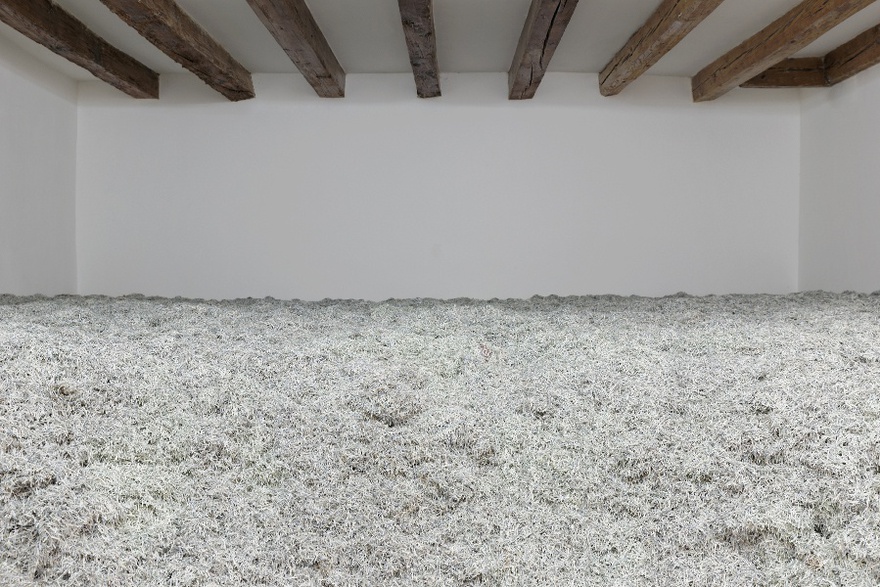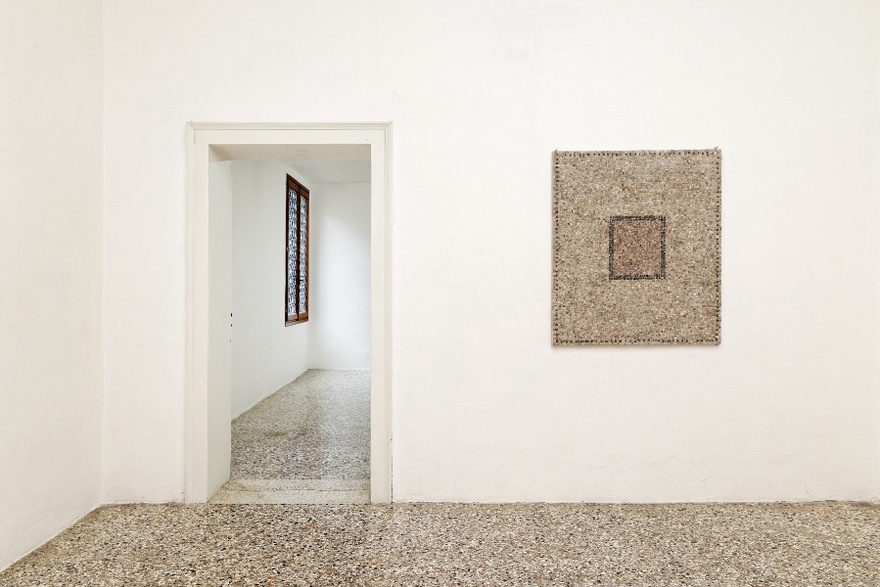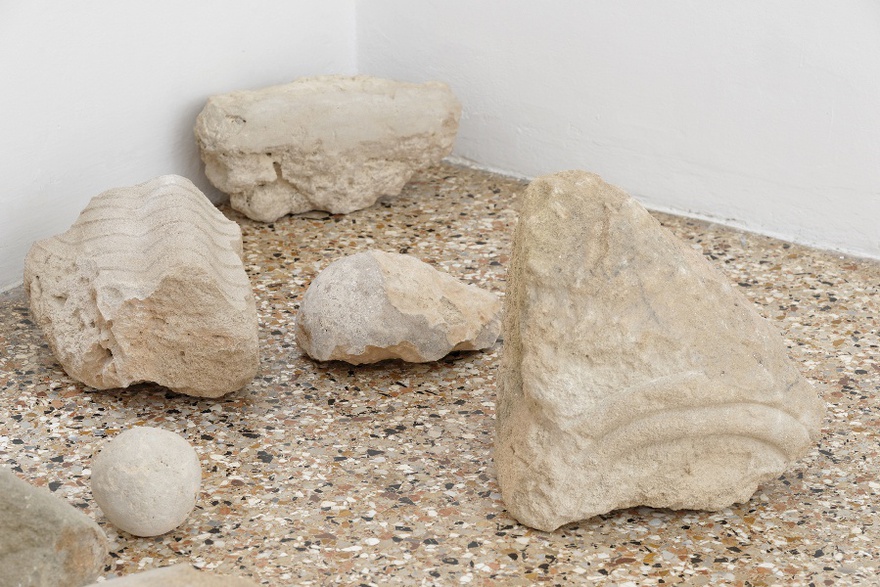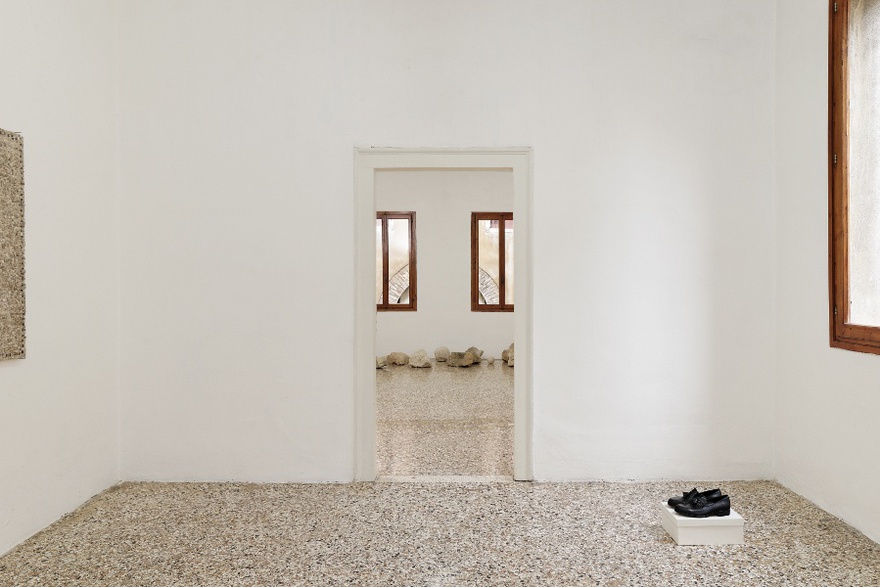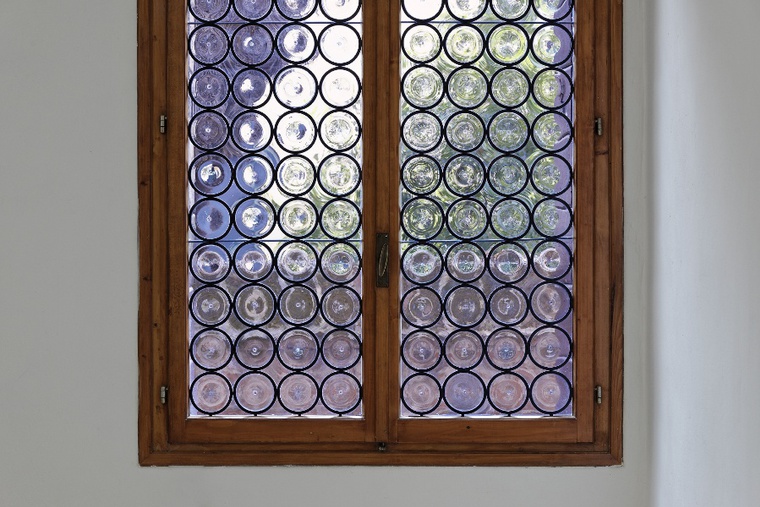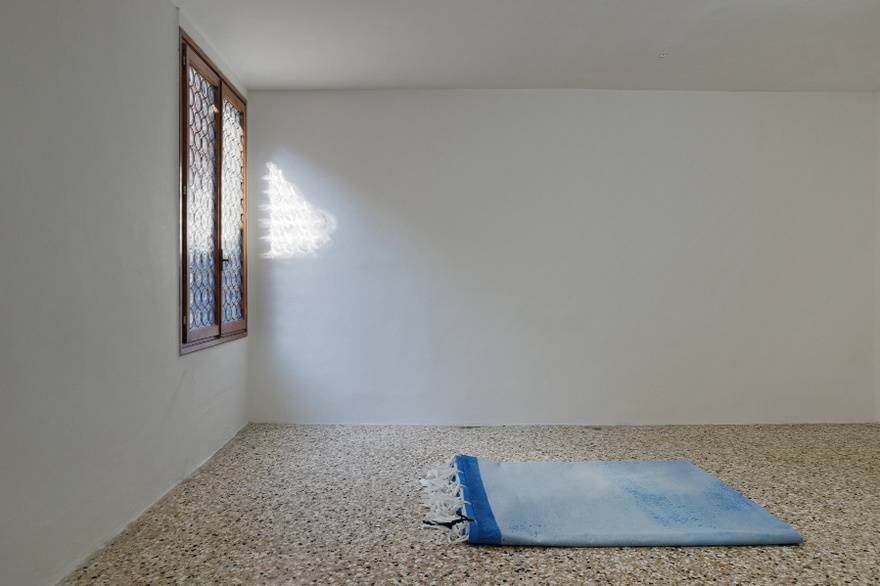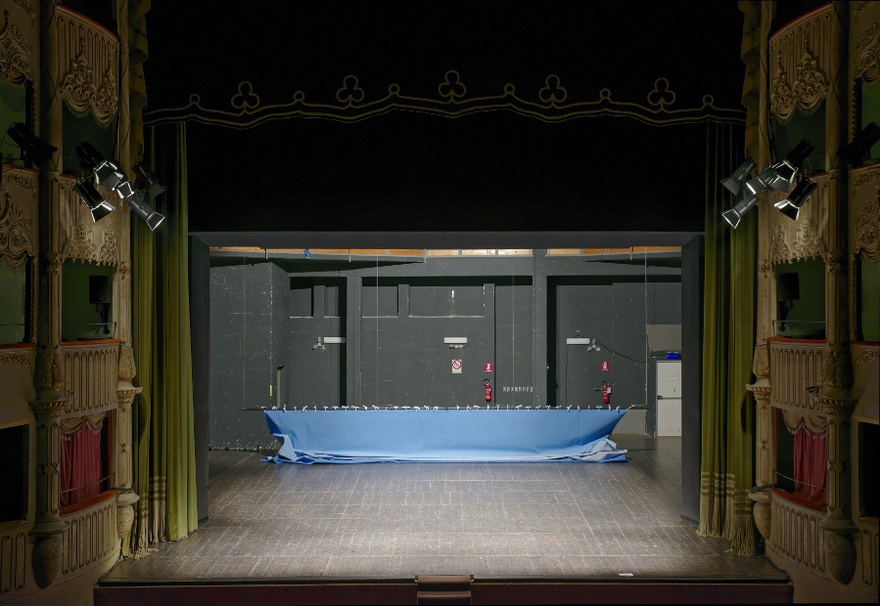Essays
Having the Stars
The Little Deaths of Christodoulos Panayiotou
Lions are not known to live in lagoons, but that hasn't kept the king of beasts from representing Venice as the emblem of Saint Mark. The city's patron saint wasn't really known for his time on the Adriatic, either. If anything, his ties were with Egypt; Mark founded a thriving church in 48 AD in Alexandria, where he was buried until his remains were stolen by two Venetian sailors in 868. His body was purportedly removed for 'safe-keeping' and smuggled across the sea, in a heist that explains the presence of a camel – another non-indigenous beast – in The Stealing of the Dead Body of Saint Mark, a 1560s-era Tintoretto painting commissioned for the Scuola Grande di San Marco.
But Tintoretto left out one detail. As a sure-fire way to slip past Muslim ship inspectors, the sailors cloaked the saint's body with a layer of pork. Part comedy, part tragedy, the tracks of this historical caper can be felt throughout the city. In 1063, St. Mark's contraband relics went temporarily 'missing', only to be rediscovered one year later and entombed in the Basilica San Marco. In short, the closest thing Venice has to a heart comes from a borrowed corpse.
***
In January 2014, the artist Christodoulos Panayiotou wrote a letter to curator Omar Kholeif, marvelling at the utter lack of 'maritime symbolism' in Venice's 'ornamental fantasies'.[1] Why, after all, would an empire whose power derives from its strategic position at one end of the Adriatic Sea choose as its mascot a stolen saint and his lion? Not only a lion, but a winged lion – a creature explicitly outfitted for earth and air, not water. In the letter, Panayiotou wondered if this had something to do with 'the city's rivalry with the sea, to the efforts of Venetians to de-liquefy, stabilize and solidify the waters.'[2] He pointed out the 'arrogant scenography of preeminence' in the pretence of building city gates, when it was the sea itself (the city's only true threat) that insured real walls would never be needed. So much of Venice had been made for show, he noted: the 'Most Serene Republic' was little more than a series of elaborate stage sets strung like shingles along the Grand Canal, each threaded through with dark, dank alleys, barely big enough for the daily streams of rolling suitcases and parasols.
But if Venice is to be thought of as theatre, who is its intended audience? Who benefits from its performance: the people or the sea? Even to an untrained eye, it would seem that both have now colluded against the wayward capital, coaxing the rising waters ever higher with each passing cruise ship. Venice, Panayiotou concludes, 'will always belong to the past. It trades its decadent glory in fears that it will fade away in the future.'[3] Perhaps this explains the wishful allegiance with the winged lion.
Panayiotou wrote this letter while working on Two Days After Forever, the Cyprus Pavilion for the 56th Venice Biennale (2015), which Kholeif curated. The title of the exhibition was lifted from an improvised line in a live recording of Nina Simone's take on the Gershwin standard, 'I Love You, Porgy'. The gentle pleonasm of the phrase plants the tiny hope that maybe, just maybe, the extravagance of one's devotion might be enough to alter the tides of time, tacking two extra days onto an eternity. There's a wry humour in this juxtaposition of the limitless with the limited. After all, if one has the power to bypass the bounds of the infinite, why stop at adding only two days?
Settled in and around the courtyard of Palazzo Malipiero, Two Days After Forever courted the temporal confusion of its title, mingling past and future tenses through a selection of the artist's older works and new commissions. Panayiotou inaugurated the pavilion with The Parting Discourse (2015), a performance staged off-site at the Teatro Goldoni, a grand old theatre just an elbow-shaped alleyway down from the Rialto. First built in 1622 as a comedy theatre, Teatro Goldoni recalls Venice at its most serene: its interiors are iced in decorative trim and studded with luxury loges; a crystal chandelier swoops over carmine-coloured seats. Panayiotou played this opulent setting to his advantage. When the lights dropped, all eyes fixed on the stage, which was bare except for a suspended curtain, the colour of the sky on novelty beach towels left too long in the sun. At an unseen signal, the fabric began its descent, fluttering into slow, decadent folds on the floor of the stage. After the curtain had completed its fall, two young men took to the stage and proceeded to fold the object, with the ritualistic solemnity typically accorded to a flag or a burial shroud. Once the curtain was properly bundled, the two men hoisted it up and carried it down the stage steps, through the aisles, and out of the theatre to the Palazzo Malipiero, where it was laid to rest as part of the exhibition.
In the wake of this departure, the audience was left to reconcile with the shock of being forever severed from those brief seconds of beauty as the curtain dropped. That billowing instant was a little death that countered the codes of the theatre world, in which the drop of a curtain signals the end of whatever fantasy played out on stage, just as a curtain's rise marks the resurrecting of that same fantasy, at the same time, the following night (or a few hours earlier, in case of matinées). The Parting Discourse inverted those expectations: once it had fallen, this curtain would not rise again, except, perhaps, in memory. For a similarly-structured piece, produced for a 2012 show in Brétigny, Panayiotou commissioned special effects experts to ply their visual cunning to paint a sky on the theatre backdrop in such a way that it would photograph more convincingly than it would appear to the naked eye. Thus, any potential documentation of the curtain before it was folded would be automatically altered by the technical mechanisms of the recording device. As a further provocation, the piece's title, – Nowhere – underscores the absurdity of what viewers would have had the possibility to see, should they have been at the right place at the right time.
In Venice, once the curtain from The Parting Discourse arrived at Palazzo Malipiero, it was left folded on the floor, a token of a timespan – a moment never to be repeated. Another was forged in a recurring performance that featured the young dancer Jean Capeille executing a solo dance – a pas seul – through the rooms of the pavilion at seemingly random hours. Though the performance took the form of life, it imitated both a fictional and a real death, with the title stretching out like a dancer's limb: The Death of Nikiya from the ballet 'La Bayadère', choreographed by Christodoulos Panayiotou, After Rudolf Nureyev, After Marius Petipa (2015). Each clause is a cipher for decoding the multiple deaths inscribed into every arabesque. La Bayadère marked a high point in ballet masterMarius Petipa's storied career. The ballet was written in the late 1870s, during the celebrity choreographer's sojourn at the St Petersburg Imperial Theatre. Accordingly, it bears all the markings of a romantic blockbuster with star-crossed lovers, scenes from a many-maidened afterlife, and a show-stopping earthquake, all steeped in the extravagant, Orientalist setting, so popular at the time. While the death of the faultless (female) virgin was a steady trope of the genre, Petipa played against expectations by bumping this death to the first half of the ballet rather than saving it for the climax. Death, for Petipa, was a beginning, not an end.
In the story, the eponymous temple dancer (or 'bayadère') Nikiya swears her heart to the warrior Solor, but their love is challenged when the reigning king 'rewards' Solor with his daughter's hand in marriage. In an additional act of cruelty, the distraught bayadère is made to perform at the royal wedding, where she is rebuked for her mournful demeanour and urged to put more spring in her step. At this point, the jealous bride slips a viper into a basket of flowers presented to the dancer. Once bitten, Nikiya performs a demanding solo in which she wrestles with the awareness of her impending death, eventually refusing an antidote, preferring to die than to face life without her beloved. In Petipa's original, Nikiya's heart-rending pas seul is followed by an even more spectacular scene, in which Solor is haunted by a vision of his lost love, attended by a flock of snow-white souls in the Kingdom of the Shades, a Himalayan nirvana. The final act unleashes an earthquake, which causes the temple to collapse, killing the entire wedding party. Solor and Nikiya are then reunited in the underworld, granted in death what was denied to them in life.
When the legendary dancer Rudolf Nureyev – who himself had performed as Solor when the Kirov Ballet first brought La Bayadère to Paris in 1961 – staged the ballet for the Paris Opera in 1992, some thirty years later, he omitted the original last scene, so that the final curtain dropped with La Bayadère suspended in the dark, dream-ridden hollows of the underworld. This denial of a happy ending was brought home at the premiere, when Nureyev took to the stage for a round of applause. While it was no secret that the great dancer's health had deteriorated from an AIDS-related illness, the extent of his condition was broadcast by his appearance. In that instant, the danced death of his heroine was irrevocably contaminated by the master's very real demise, so that Nureyev's own death became 'the (unrepeatable) last act of his Bayadère.'[4] This conflation would echo in Nureyev's grave, which was crafted by La Bayadère's stage designer, Enzio Frigerio, and draped with a mosaic ingenuously fashioned to simulate the fringed kilim rug that the dancer wore for his last bow on stage at the Paris Opera. Even in his death, Nureyev clung to the artifice of the stage. As Panayiotou observed in another of his letters, 'Nureyev is literally and in every possible way buried with and under La Bayadère.'[5] By assigning Capeille, a male dancer, Nikiya's celebrated pas seul, Panayiotou has, at least symbolically, allowed Nureyev to take on the part of the beautiful dancer, scorned by a senseless turn of fate, and condemned to suffer a very public death. It was the role he knew best, after all.
Formally trained as a dancer himself, and, by his own admission, having come of age on an old worn-out VHS tape recording of Nureyev, Panayiotou took La Bayadère to heart. In addition to haunting the exhibition, Two Days After Forever, the story of Nureyev's La Bayadère also anchored Panayiotou's lecture-performance Dying on Stage, which was delivered in multiple venues over the course of 2015, including the Serpentine Galleries in London and Performa 15 in New York. Tantamount to a guided turn around YouTube (with a few live action excerpts of Nikiya's pas seul, courtesy of Capeille), Dying on Stage takes as its point of departure the final scene from the classic 1942 film, Now Voyager, during which Bette Davis's character, Charlotte, coos her resolve in the face of life's little injustices: 'Let's not ask for the Moon. We have the stars.' On this note, Panayiotou proceeds to usher his audience through a series of video clips found online that survey instances of mutual contamination between death and theatre.
Accordingly, the stories that unravel through the lecture are equal parts comedy and tragedy, as the audience struggles to read such instances as when a commentator refers to Maria Callas committing 'her first suicide', or when Sesame Street character Big Bird took to podium at Jim Henson's funeral to shakily croon 'It's Not Easy Being Green'. The puppet was a fiction but his grief was fully realized. Panayiotou contrasts this clip with a suite of videos of the international pop phenomenon Dalida. Footage from live performances captures Dalida executing a choreography of 'spontaneous' grief, while delivering a song about her estranged mother. The diva clenches her fists and shakes out her hair as if temporarily overcome by the fierceness of her own emotions, although every last move falls perfectly on cue. Who is to say whether her mourning is any more or less real than Big Bird's performance at the funeral? This is the power (and the danger) of death on stage.
But to return to The Parting Discourse: its curtain lay folded on the floor of the Palazzo Malipiero in a kind of fossil state, a relic of a performance in which the prop played the starring role. Just as fossils suggest to us that dinosaurs had feathers, but can tell us nothing of their colours, the curtain's beach towel blues are only just visible, seeping in occasional splotches through the unpainted side of the fabric, betraying nothing of the little death contained within. Not all deaths are final, however; if The Parting Discourse calcified a single set of actions (curtain fallen, curtain folded), then other works within Two Days After Forever offered alternative endings, staging cycles of transformation. A few feet from the curtain, a floor-mounted fountain wept a tiny rivulet, which streamed over a single sloping sheet of copper mounted over a black bucket and a water pump. The elements were assembled in such a way that they could be easily dismantled, as a nod to Bertolt Brecht's 1939–40 parable, Der Messingkauf (which has been translated alternately as 'The Purchase of Brass' or 'The Price of Copper'.) In the anecdote, a character attempts to purchase a trumpet at the going rate for its metal – but how to argue against the would-be buyer's logic? How does one explain where this additional value comes in and how it should be calculated?
Just as Nina Simone's devotion promised to break the tyranny of the traditional structure of time, exceeding the limits of eternity, Two Days After Forever indulged in an alchemy capable of stretching an object's value beyond its set boundaries. The central space within the Palazzo Malipiero was studded with limestone formations and architectural relics. Small and relatively shapeless, these objects were deemed to be debris and therefore of 'less' value simply because their function could not be readily determined by archaeologists. Through slight interventions (including assigning catalogue-ready titles like 74.51.2369, 74.51.2556, or 74.51.2869) the artist elevated these archaeological outcasts to the status of sculpture. Evidence of an even more drastic transformation, the adjacent vestibule overflowed with shredded Cypriot currency, a casualty of the country's 2008 transition to the Euro. For another series, Panayiotou commissioned shoemakers to craft custom pairs of elegant loafers from the (presumable) leather of imitation handbags. These were stacked on boxes in the exhibition space, never to be worn.
If the artist was able to endow these objects with a new life, other works were configured so as to contain a little death, folded within. Among these were three wall-mounted mosaics consisting of new configurations of ancient limestone tesserae, temporarily on loan from the Archaeological Museum in Nicosia, where the tiny stones had been placed in storage, after having lost their place in larger compositions. Unlike the limestone relics or the shredded currency, which will retain their place as art objects, these mosaic stones were stripped of their function as art objects at the end of the exhibition, when the mosaics were dismantled, and the tesserae returned. Like the curtain from the The Parting Discourse, the objects were left with no observable evidence of their fleeting existence 'on stage'. But, unlike the curtain, which will remain folded, these tesserae are open to reuse, if not by the artist, then by the museum. Their stories have not reached an end.
***
By assigning devalued objects new roles within his work, Panayiotou ultimately seeks to resist the linear narratives that death punctuates. This idea of a lifespan as a singular progression underlies the tale of Europe's other winged lion, the Sphinx. According to popular myth, this creature – half-man, half-lion and winged like a bird – encounters Oedipus and plies him with a riddle: 'What walks on four feet in the morning, two in the afternoon and three in the evening?' After pondering the question, the hero is able to correctly guess the answer: man, a creature that crawls as an infant, walks in the prime of his life, and uses a cane as he grows older.
Oedipus's answer may have satisfied the Sphinx, but its implications are contradicted by the winged lion of Saint Mark, an emblem that received a new life through an affiliation with Venice that was forged long after the saint's death. This kind of life after life fuelled Petipa's original scripting of La Bayadère, which dared place its happy ending – the unification of lovers – beyond the bounds of mortality. By summoning these stories within the exhibition space, Panayiotou loosens the hold of the so-called life cycle within his work, freeing his objects to imagine those two days after forever.
[1] Christodoulos Panayiotou, 'Letter from Venice', in Two Days After Forever: A Reader on the Choreography of Time. Sternberg Press, Cyprus Ministry of Education and Culture, 2015. 206.
[2] Ibid, 206-207.
[3] Ibid, 206.
[4] Eike Wittrock, 'Choreographic Reanimations: Dance, Death and Archaelogy', in Two Days After Forever, 132.
[5] Panayiotou, 'Letter from Li Galli', in Two Days After Forever, 86.

